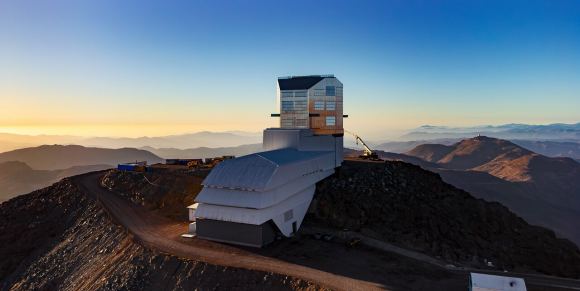After 20 years of development, a 3200-megapixel camera built specifically for astrophysical discoveries has finally arrived at its destination. The Legacy of Space and Time (LSST) camera was delivered to the Vera C. Rubin Observatory in Chile in mid-May 2024.
The camera traveled from its design lab at SLAC National Accelerator Laboratory. The engineering team outfitted it with special data loggers, monitors and GPS to track conditions during the trip. Then they packed it into a specially built container and the entire assembly began the journey from San Francisco airport to Santiago on a chartered flight on May 14. Once in Chile, it traveled five hours along a 22-mile gravel road to the site. It arrived on the 16th, marking a huge step toward opening the Rubin Observatory, according to the construction project manager. “Getting the camera to the summit was the last big piece of the puzzle,” he said. “Now that all of Rubin’s components are physically in place, we are on the home stretch to doing groundbreaking science with the LSST.”
The LSST camera is the last major component of the Rubin Observatory’s Simonyi Survey Telescope to reach the top. It is about the size of a small car. Inside, its focal plane contains 189 CCD sensors arranged on a series of “rafts.” The sensors combine to provide a 3200-megapixel view.
After its arrival, the camera will undergo several months of testing in the observatory’s clean room before being mounted on the Simonyi Survey Telescope with its newly coated 8.4-meter mirror and 3.4-meter secondary mirror.
About the Vera Rubin Observatory
This unique observatory is named after astronomer Vera C. Rubin. Her work focused on the mysterious “dark matter” that seems to permeate the universe. Together with her team, she studied dozens of galaxies to understand what influenced their movements. It turned out to be dark matter. The search for dark matter and its existence throughout the universe is one of the main goals of the observatory that now bears her name.
To understand the distribution of dark matter, the LSST camera will be useful. It will take pictures of the sky every night for a decade, conducting a comprehensive survey that will provide a complete image of the visible sky every 3-4 moons. Each area imaged will be about the size of 40 full moons, and the survey will take advantage of the 8.4-meter telescope, which moves quickly between imaging positions. When fully operational, the observatory will provide a 500 petabyte set of images and data products of the sky.
In addition to conducting this unprecedented study at very high resolution, the Rubin Observatory will track objects that are changing in brightness – so-called “transients”. These include supernovas, variable stars, mergers of dense objects such as neutron stars or black holes, and other rapidly changing events and objects. In addition, it will track asteroids and other objects that are moving through the solar system.
The formation and evolution of the Milky Way is another area of research for telescope users. Rubin should be able to track streams of stars throughout the galaxy and map their trajectories. This information could provide valuable insights into how our galaxy was formed and how stars from cannibalized galaxies move through it.
What’s next for the Vera Rubin Observatory and the LSST camera?
After the LSST camera arrived at the Cerro Pachón site, technicians moved it into a huge white room, a controlled environment that protects the instrument while they work to prepare it for installation on the telescope. They examined the camera and downloaded data from all the instruments connected to it about the “journey” from the U.S. to Chile. “Our goal was to make sure the camera not only survived, but arrived in perfect condition,” said Kevin Reil, an observatory scientist at Rubin. “Early indications – including data collected by the data loggers, accelerometers and shock sensors – suggest we were successful.”

The observatory is still in the final stages of construction. The telescope is in place and other instruments and infrastructure are being completed. Everything should be ready for “first light” and the start of scientific operations sometime in 2025. By then, more parts of the telescope and its mirrors should be installed, and tests of various other instruments both in and out of the sky will be conducted as scientists prepare to put Rubin into operation next year. Once observations begin, astronomers using Rubin could discover around 17 billion stars and about 20 billion galaxies in the distant universe.
For more informations
LSST camera reaches Rubin Observatory in Chile, paving the way for cosmic exploration
Vera C. Rubin Observatory